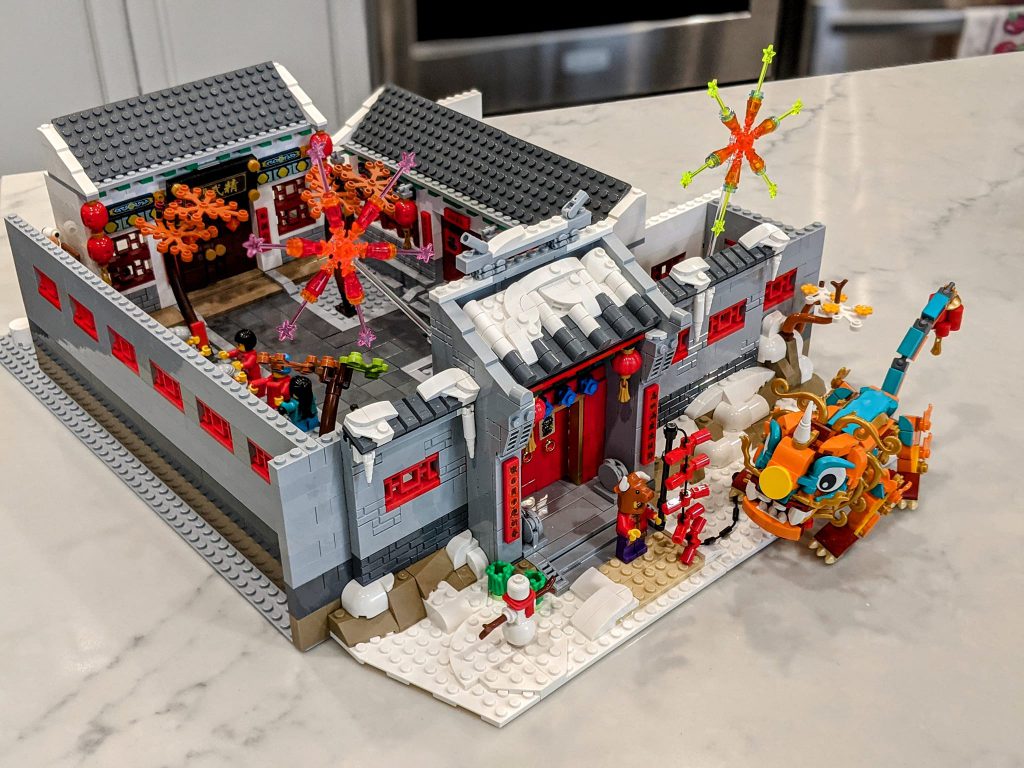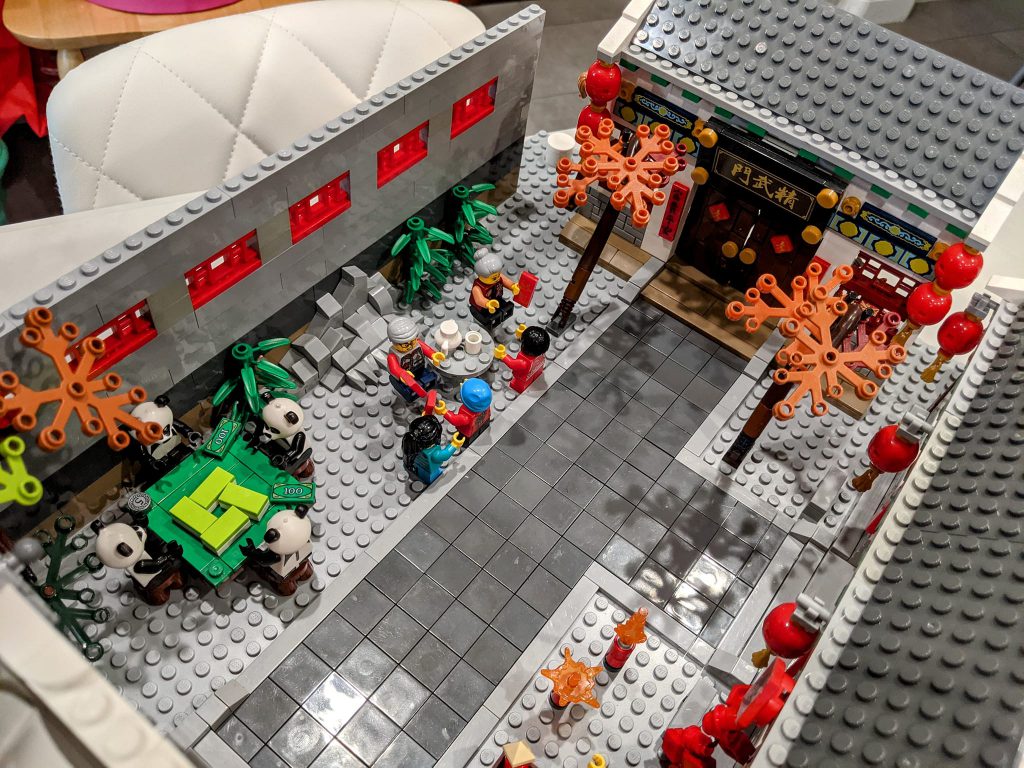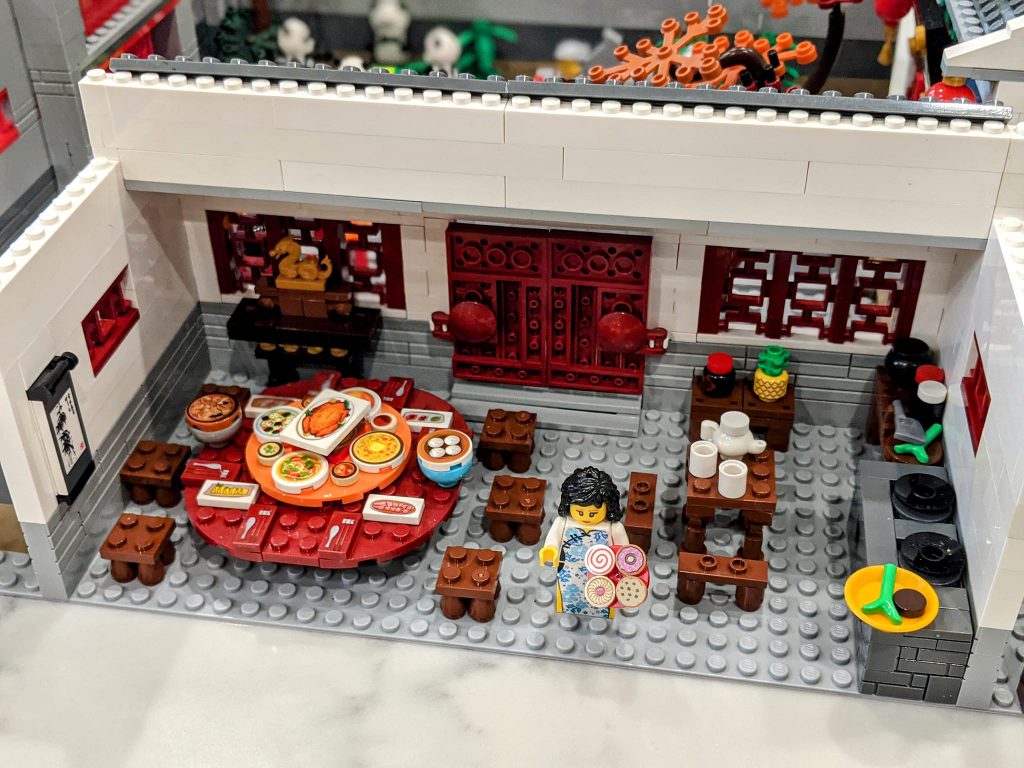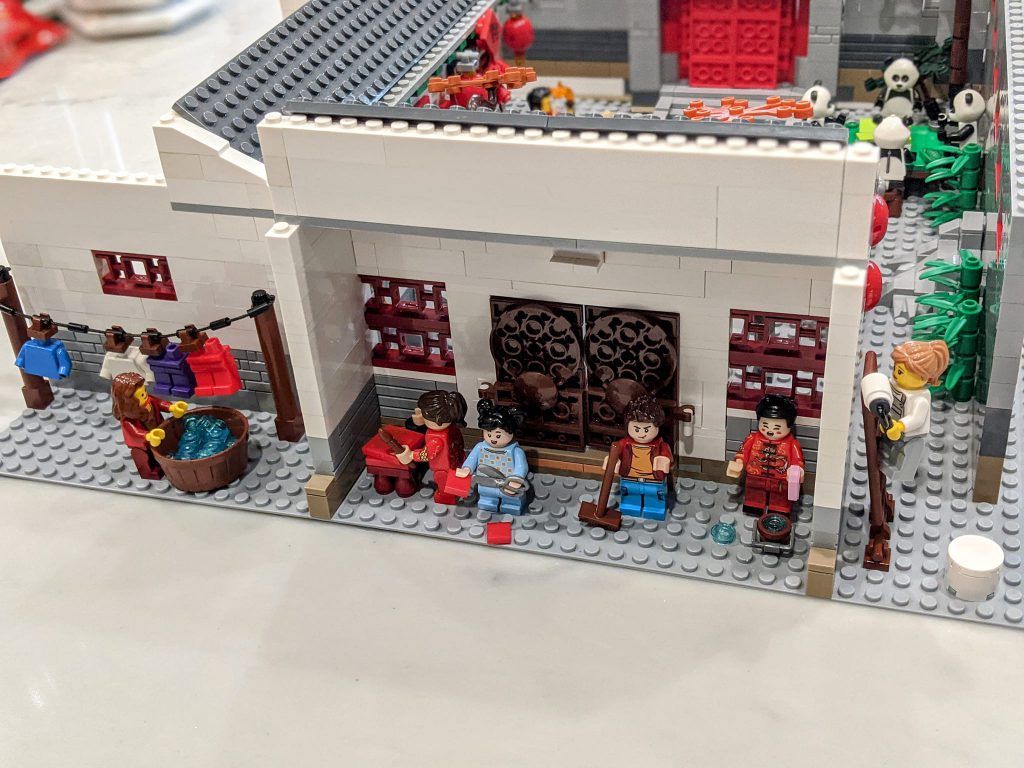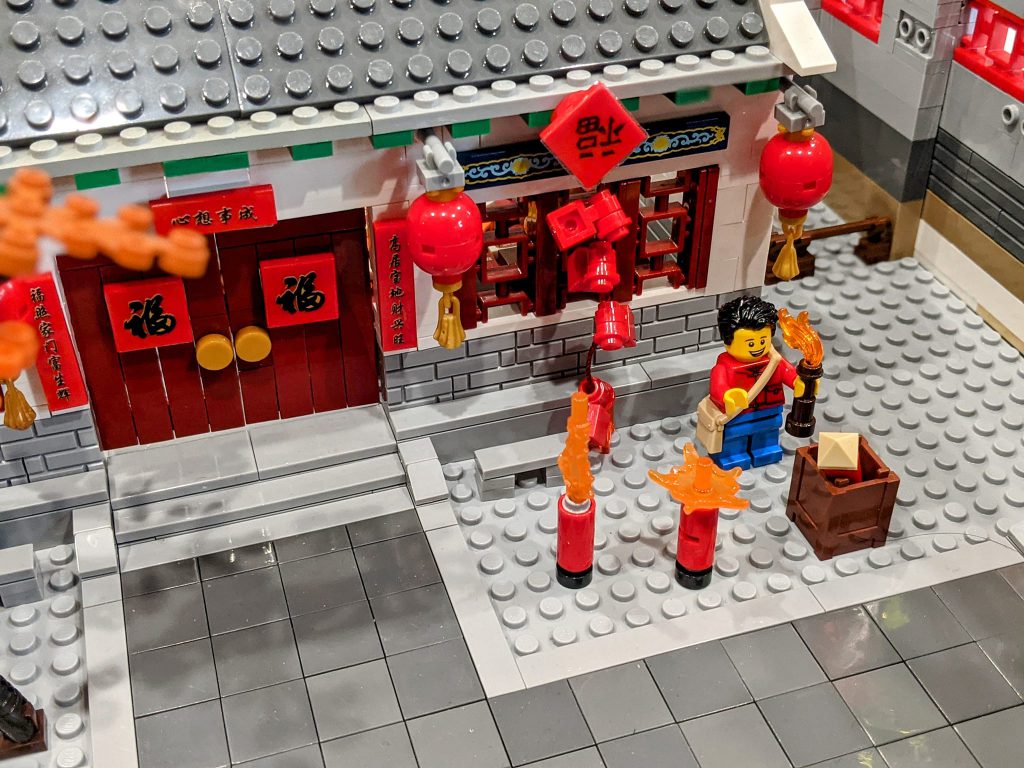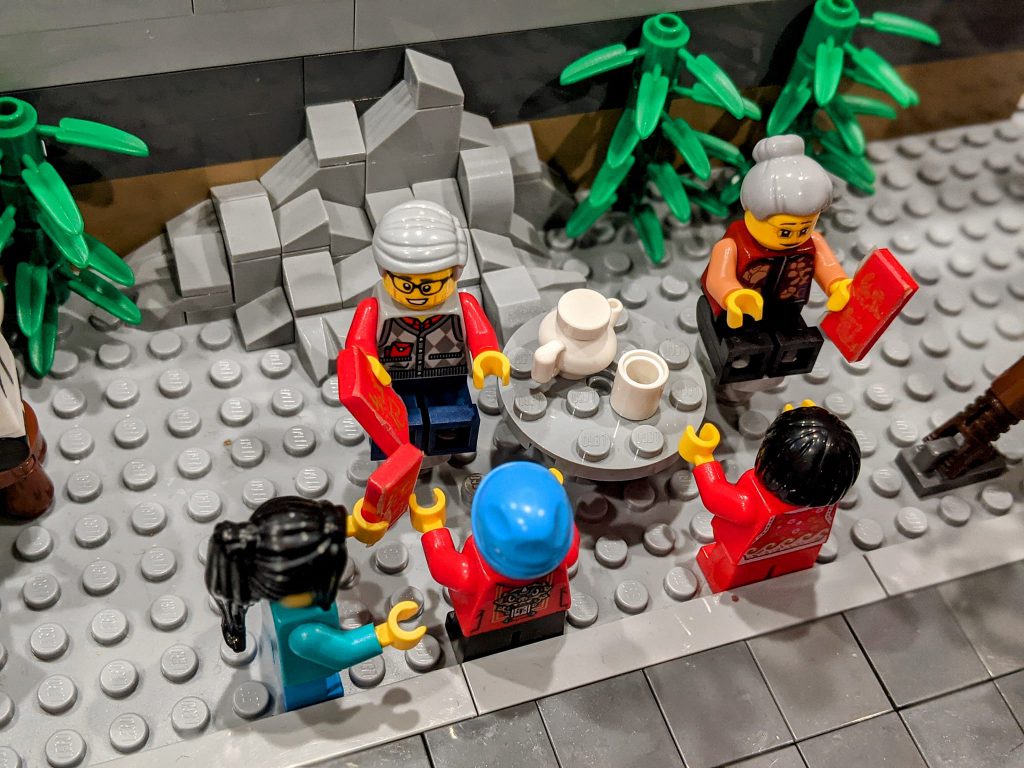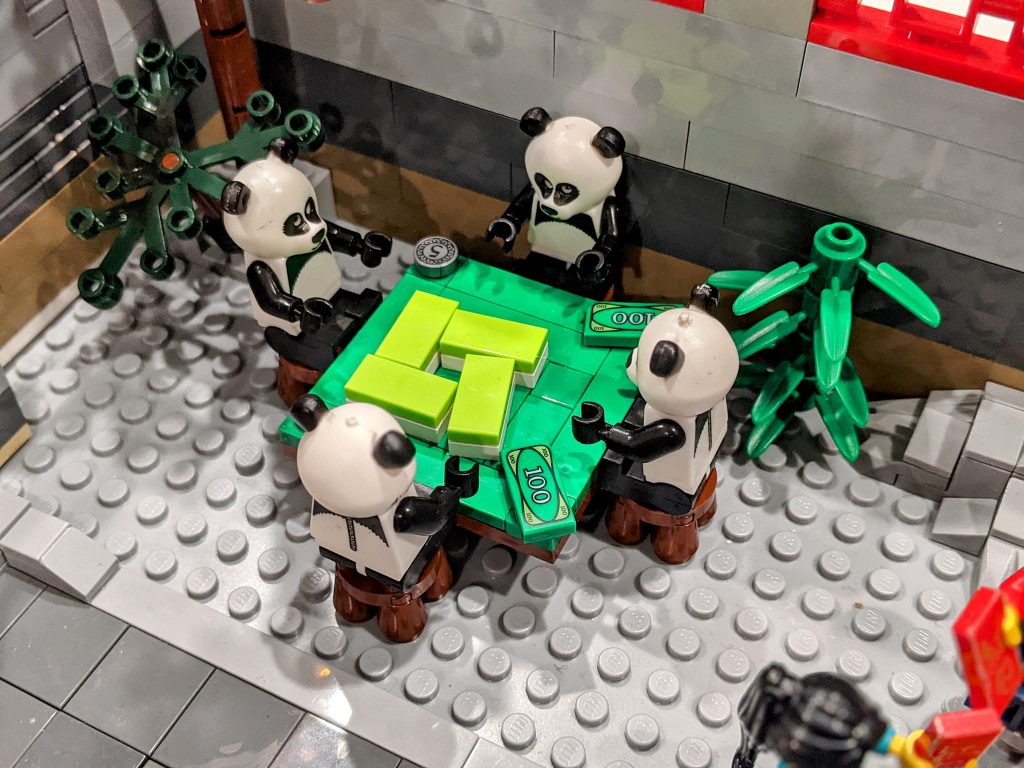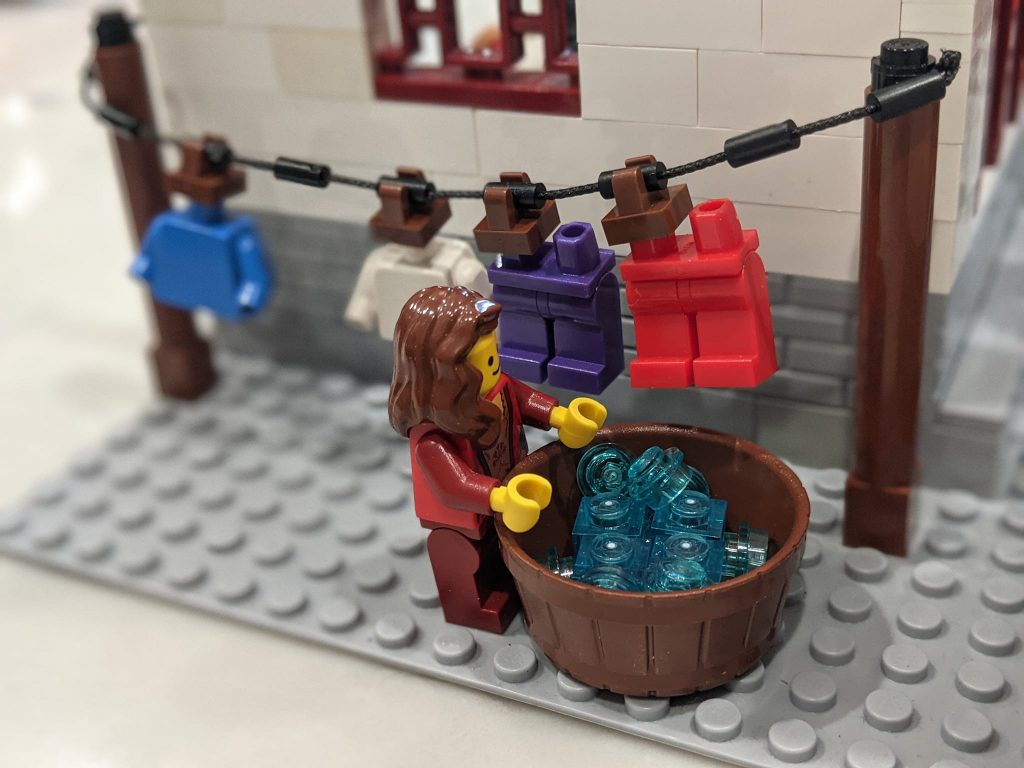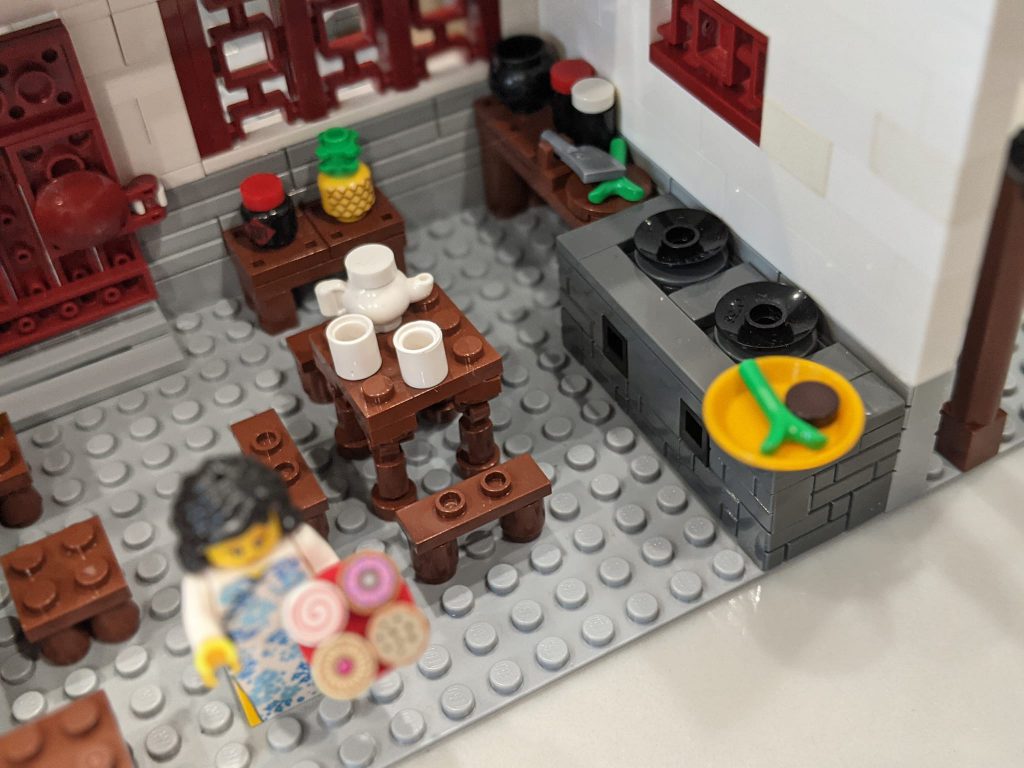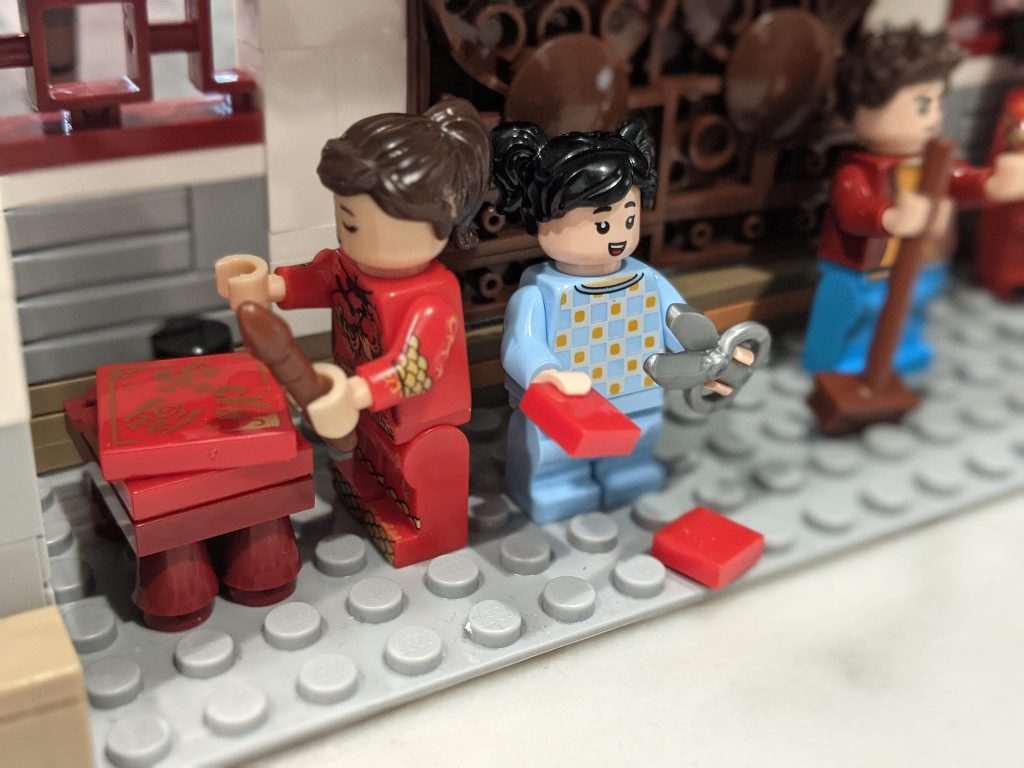This set explains the origin of the Lunar New Year and some of it’s traditions. A popular folklore tells of a mythical beast called Nian (which sounds the same as ‘year’ in Chinese) that shows up every New Year’s Eve to cause havoc in the village. To scare away the Nian monster, the village people displayed red paper everywhere, burned bamboo, lit candles, and wore red clothes. In addition, people also made loud noises and burn bright lights from the fireworks to scare of this Nian monster. These traditions have been continued until the present time.
The front entrance tells the story of this Nian monster. The rest of the house features the tradition of what people do on Chinese New Year.
The Lunar New Year holiday is centered around food. People spend several days in preparation of the New Year Eve’s dinner, and every dish has symbolic meaning. For example, one of the dishes would most likely be a whole fish. A whole fish symbolizes wholeness and prosperity. People would also serve dumplings because they look like the gold ingot and/or noodles which represent longevity.
Another tradition of the Lunar New Year is the cleaning. People often clean their house to dust off any of the bad luck of the previous year and to welcoming in the new start of the year. However, you should do the cleaning before the first day to sweep away any of the old bad lucks and not any of the new good lucks that arrived at the stroke of midnight.
Lunar New Year in my family has always been centered around family gathering and food. There would be a huge feast along with Mahjong, a tile-based four person game.
My favorite holiday during my childhood has always been the Lunar New Year because the many aunts and uncles that come visit us would always hand out red envelopes with money inside to me.
Photos from 01/29/2022 for the Temple Exhibit
